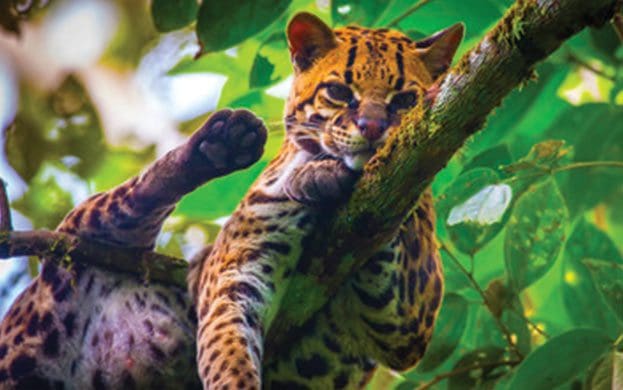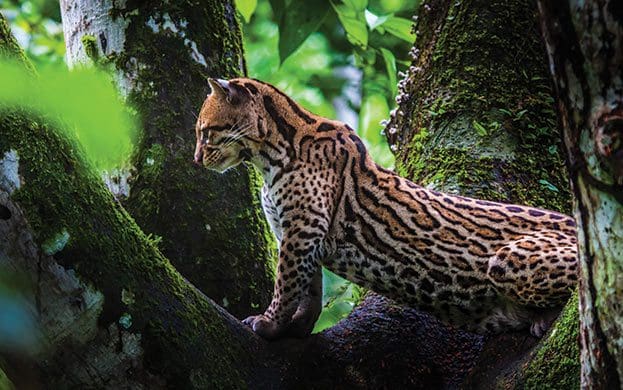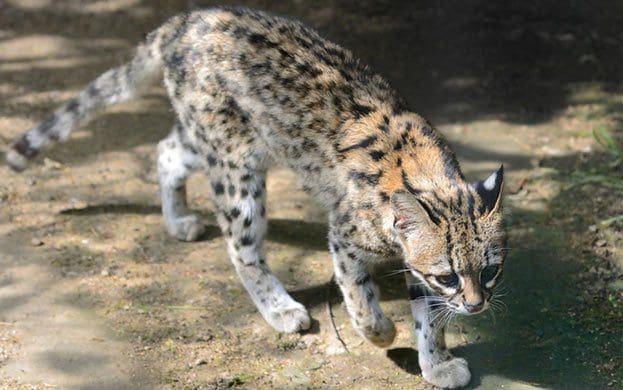
Oncilla: Costa Rica’s little spotted cat
Costa Rica creature feature oncilla: Oncilla, often referred to as the little spotted cat, or in Costa Rica as the tigrillo. This Costa Rica cat is the smallest species of wildcat in this country. Living in the mountain forests at altitudes above 4,900 feet, oncillas are rarely seen in the wild. Fortunately, this is not due to endangerment but rather to their secretive nature.
This little spotted cat is also a very good swimmer.
Weighing between three and six pounds, the little spotted cat has a tail that is slightly shorter than their body. Their stunning fur patterns vary from tan to ochre shades of yellow, sienna, red and umber. Dark rosettes cover the upper side of their coat while the underside is pale, with just a few spots. About one-fifth of these kitties are completely black. The oncilla’s beautiful fur has made it a target of excessive hunting in the past. Loss of habitat due to cultivation and human encroachment has also threatened the species’ survival.

Costa Rica Cat or this little spotted cat is sitting in a tree. Costa Rica creature feature oncilla
Being a very good climber enables the oncilla to spend part of its life arboreally. The tail is used for balance in moving across the treetops. These nimble cats are also very good swimmers. Oncillas are crepuscular and nocturnal, meaning active at twilight and night. As carnivores, they feast on birds, rodents, eggs, invertebrates and small primates.

this Costa Rica cat is sneaking around
Consistent with their secretive behavior, oncillas are solitary and only interact with each other during mating season. They do vocalize, with sounds ranging from young males purring to adult males growling when they meet each other. Oncillas reach sexual maturity at about 2 years old, mating in spring and summer. Following a gestation period of about 10 weeks, females give birth to small litters of one to three kittens. The kittens are very vulnerable during the first two months of life. They open their eyes between eight and 17 days after birth, develop all their teeth at three weeks and then are ready for solid food at about 56 days. Life expectancy for oncillas in the wild is about 11 years, while captive cats have been known to live for 17 years.
Again owing to oncillas’ secretive existence, the likelihood of spotting one in the wild is not very good. Fortunately, it is possible to view these beautiful creatures in one of the wildlife parks and refuges where many have a home in Costa Rica. Four places they live in the wild are Corcovado, Manuel Antonio and Chirripo National Parks, and La Amistad International Park.
